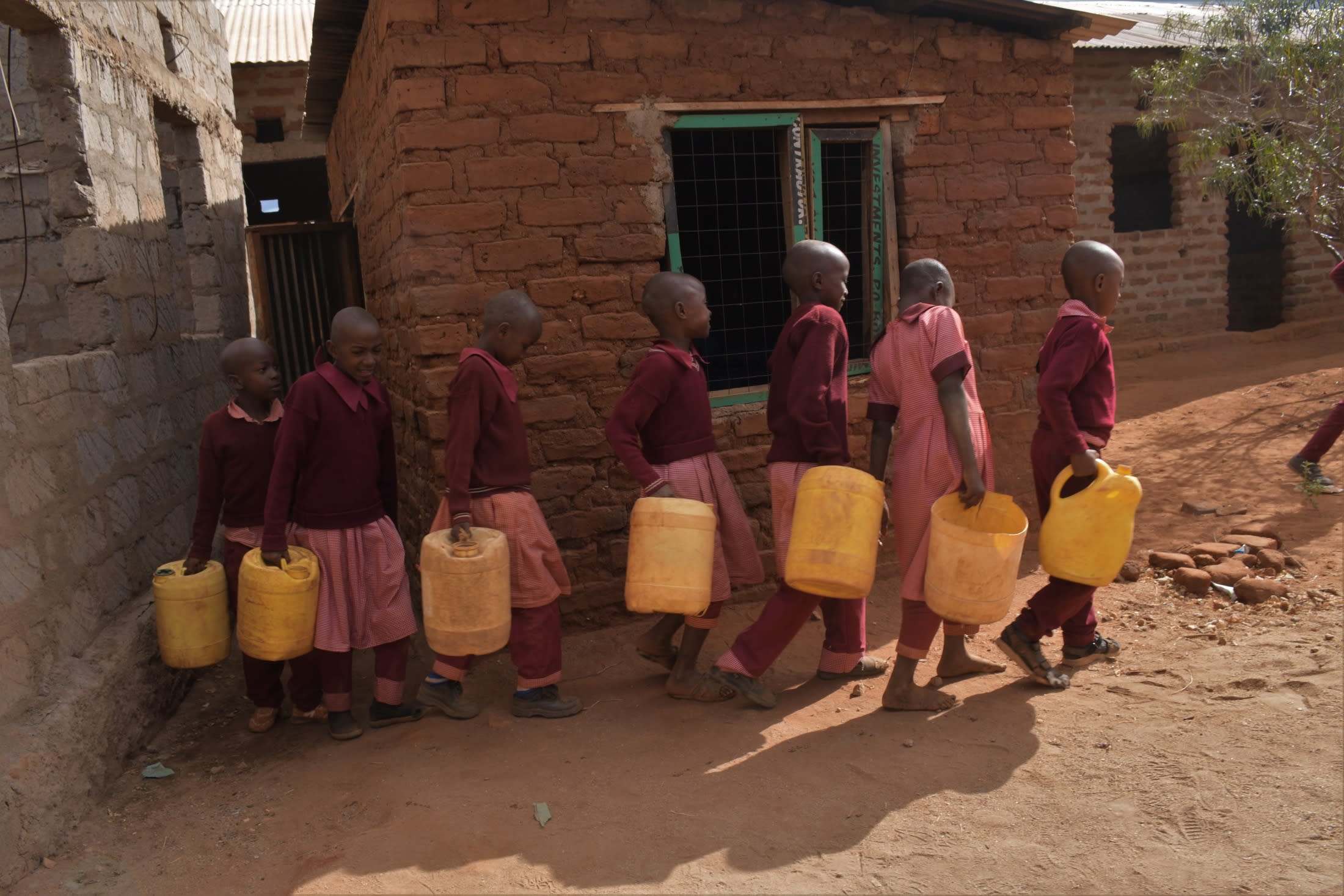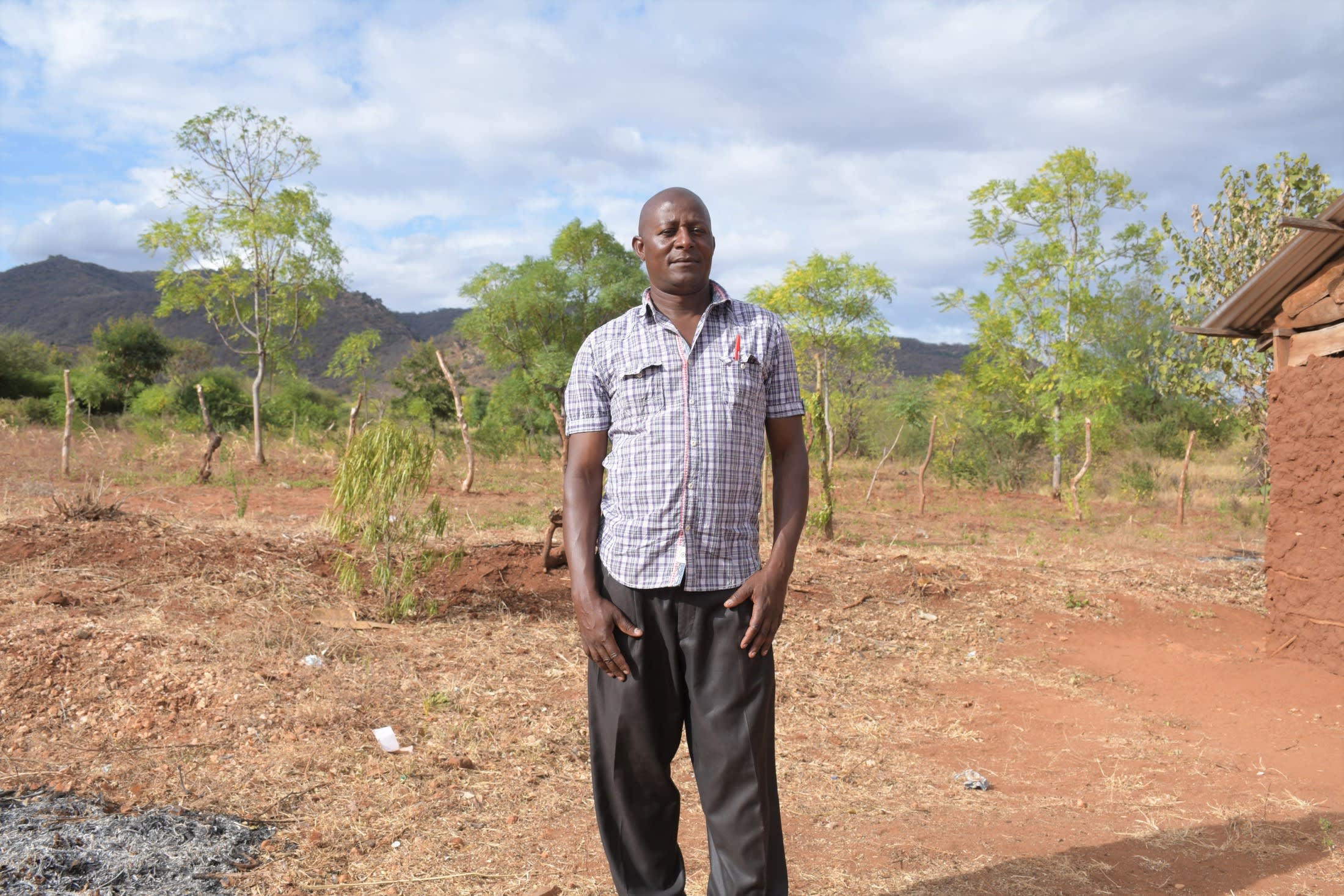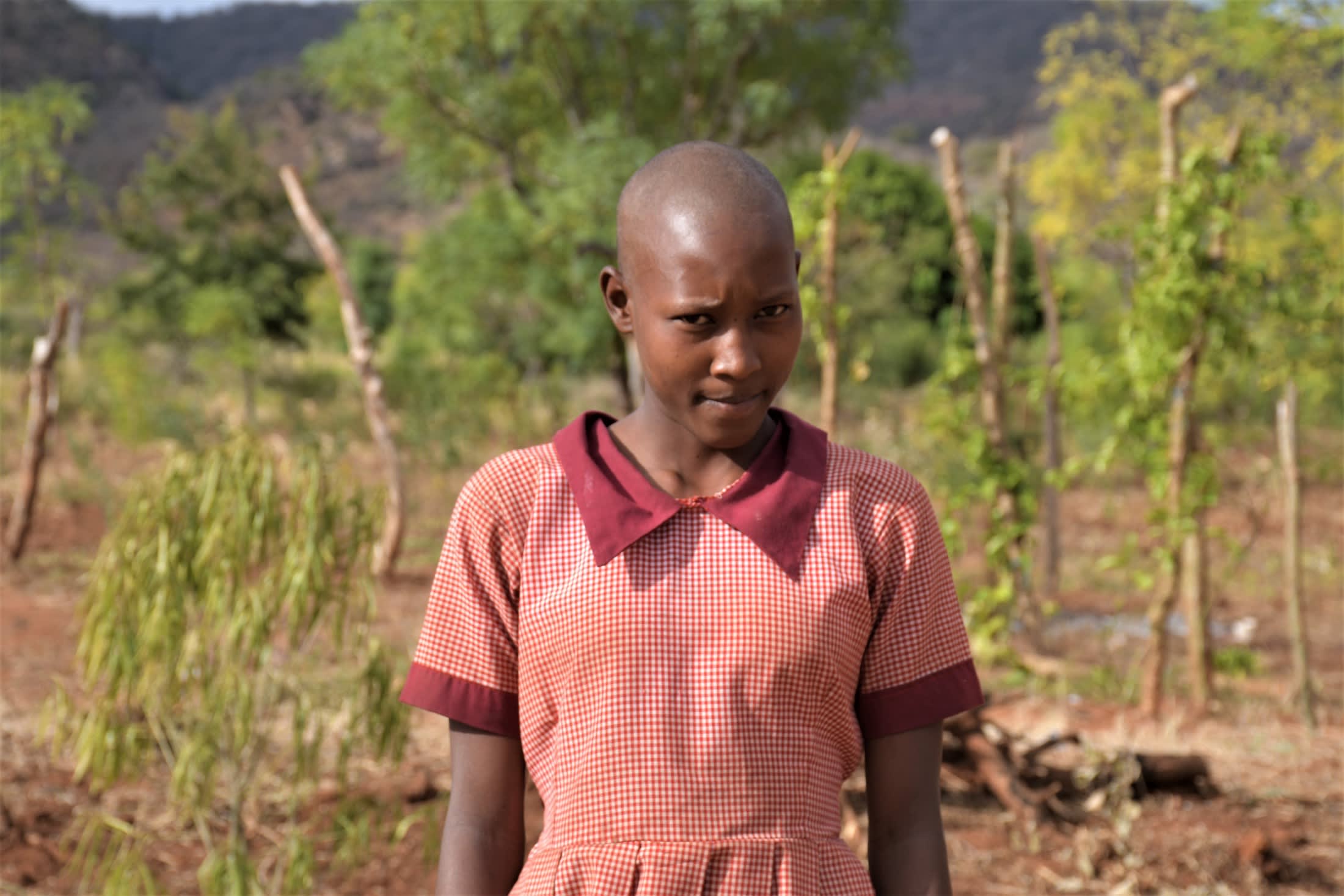The 121 students who attend Katangani Primary School are responsible for collecting water each morning and carrying it to school. Still, they can't bring enough water to meet the school's daily needs.
Students are physically and mentally tired from the burden of walking to the Iguini River, several miles away, to carry water. They miss a lot of class time and often must go to their classes thirsty and on empty stomachs.

The school administrators also pay someone to deliver water by donkey to try to make up some of the shortage, but that presents its own issues. The added expense drains the already meager school budget, the vendor is not always reliable, and the water quality of what is delivered is questionable at best.
And even with all the effort expended by students and the water vendor, it's still not enough to last an entire day.
Pupils' parents provided a small rainwater tank on the campus, but it can only hold enough water to last a few days.

"I am unable to perform my duties properly because I have to check who has brought water to school and who has not," said 35-year-old headteacher Michael Mutio (seen above). "Although I know that students get tired and late from carrying water, they depend on the water for drinking and preparing meals in school. Improving the school's academic performance and population is challenging because students get weary and inattentive from the long journey to school, and most are absent when they have no water to bring to school."
Sadly, after all the work it takes to supply the school with water, the water from both the students and the vendors is contaminated and salty, making it unfit for drinking or cooking. Both the students and the vendors collect the water from the same unprotected sources: scoop holes in dry river beds, open to dust and animal excrement. But without an alternative, the school has no choice but to use it.
Consuming this contaminated water commonly causes water-related infections such as amoeba, dysentery, and typhoid. Not only does this weaken students' health, but it also keeps them out of school, so their academic experience suffers.
"I get sick from drinking water from the scoop holes. For instance, last month, I had stomach upsets and could not hear a thing during the lessons," said 14-year-old Grace M. (seen below). "I had to leave school early and go home to ask my destitute parents to take me to the local dispensary. I also get tired from carrying water to school and cannot get enough play time because I have to help in fetching water at home."

The adverse water shortage has also led to poor hygiene and sanitation within the school's facilities. The poor learning environment challenges students' concentration ability, further diminishing their learning experience.
Installing a 104,000-liter tank will offer the school a clean and nearby water source. Students will no longer have to carry water from home, the school can reserve its resources for other essential things, and no one will risk water-related infections. And hopefully, absenteeism will decrease, and pupils will have more time to focus on their studies, creating brighter futures.
Rain Tank
We will build a 104,000-liter rain tank for this school, making the others look tiny in comparison. Because of how rarely it rains in Southeastern Kenya, this tank's large volume is designed to store as much water as possible during the seasonal rains, making more water available through the dry months. This water will benefit the students, teachers, and supplementary staff.
Parents will mobilize the materials needed for construction, including sand, stones, and water. They will also lend their strength and time to help with the construction. We will complement their materials with a skilled artisan to lead the project in addition to providing the tools, lumber, metal, cement, and gutter system.
As soon as the tank has time to cure, it can begin collecting rainwater for the school's use.
Training
We will train students and staff on sanitation, hygiene, and other topics for 1 day. Those in attendance will form a school health club that will promote good hygiene and sanitation practices both at school and at home. They will learn all of the steps to proper handwashing, how to treat water, and how to keep their environment clean. The school will also be taught how to best oversee and maintain their new rain tank and handwashing stations.
Handwashing Stations
A total of 3 handwashing stations will be installed upon the project's completion and before training. These are 1,000-liter plastic tanks fitted with 3 taps each, allowing 9 students to wash their hands at once. The student health club and school management will be responsible for making sure the tanks are filled with water and that a cleaning agent such as soap or ash is always available.




 Rainwater Catchment
Rainwater Catchment
 Rehabilitation Project
Rehabilitation Project





























